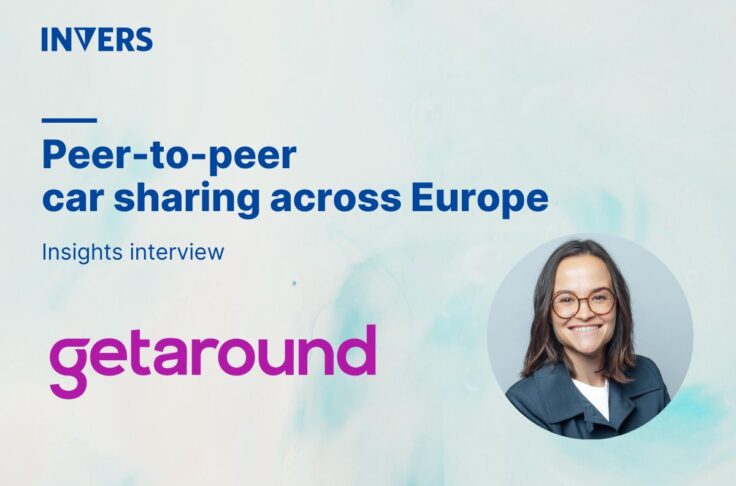Meet Our Micromobility Experts
Summary
Industry experts share their thoughts on the challenges and opportunities in shared mobility, what their multi-modal trips look like, and their dream mobility utopia.

INVERS is excited to be hosting a workshop on micromobility at the upcoming CoMotion LA. We will be talking about the two-wheel mobility revolution and how mopeds, not kick scooters, are going to improve people’s ability to move within cities.
Joining the discussion will be individuals who are working in different parts of the shared mobility space, from operator to OEM to planning to consulting. Check out their bio by clicking on their names.
- Daniella Henry, Associate Director – Policy at Revel
- Tony Ho, VP Global Business Development at Segway
- Kerby Olsen, Shared Mobility Supervisor at Oakland Department of Transportation
- Sandra Phillips, CEO and Founder, movmi
Before we start talking about moped sharing and micromobility at CoMotion LA, we wanted to have a conversation on shared mobility overall with these knowledgeable and passionate individuals.
What excites you most about shared mobility?
Sandra: Shared mobility is making safe, efficient, convenient, and affordable transportation more widely available, societally and globally. It uses resources vastly more efficiently, avoiding over-investment in vehicles and infrastructure. Shared mobility will maximize the value and minimize the pitfalls associated with electric, autonomous and other new transportation innovations.
Kerby: I’m excited that shared mobility brings zero emission mobility to people at an affordable price, that it helps people get comfortable with non-car modes and, most importantly, it’s fun!
Daniella: Shared mobility brings the possibility of increasing transportation options for marginalized communities. It’s not surprising that the same communities that have been redlined and suffer from skyrocketing asthma rates as a result of environmental burdens, are the same communities that lack access to useful, convenient, and safe transportation options.
Tony: The continued innovation in technology and business models is exciting. As product and technology in micromobility have become smarter, safer, and more reliable, we also see new business models pop up in the retail, sharing, and rental space. For example, our latest advancement in the robo-scooter T60 can dock and charge by itself – fascinating for the sharing space.
What is the biggest challenge or opportunity you see facing the growth of micromobility in North America?
Kerby: COVID-19 induced changes in travel patterns mean far fewer first and last mile trips to transit. These trips are the bread and butter of micromobility operators and without them, it’s going to be tough to survive.
Tony: COVID-19 also helped open up more space for bike lanes, but city infrastructure will continue to be biggest challenges to growth. If no permanent measure are put in place, the same problems caused by cars and their parking will return very quickly after the pandemic.
Daniella: The biggest challenge is the lack of definition and clarity across modes and the approach that companies take to entering cities. As an operator, our top priority is entering a city in partnership with city regulators and finding opportunities to genuinely and significantly integrate ourselves into the communities we serve. Taking up the public right of way is a privilege and should be treated as such. It’s an approach all companies should take, because when they don’t, the safety of the service suffers and the industry as a whole takes a hit.
Sandra: Over-regulation is a challenge. Regulations have an important role to play in ensuring a level playing field for operators and ensuring effective use of the public domain. In the last two years, city planners have increased regulation on all operators but particularly on micromobility: from fleet caps, to operational response time requests, to equity mandates, to data sharing standards to several different fees. Regulations have become so restrictive that it is nearly impossible to be financially profitable without VC backing. And VC funded micromobility is not a sustainable, long-term solution.
What does an ideal multi-modal trip look like for you?
Daniella: I live in New York, so when I think of an ideal multi-modal trip, I think of a young woman who lives up in the Bronx but works at a restaurant in Midtown Manhattan. Her shift ends at 1 a.m. and she has to take the subway that’s running local and then hope that a bus is there on time so she’s not waiting alone at the stop. When the bus is late, she has another option, because luckily there’s a Revel right outside of the subway station. She can hop on the Revel and get home safely and at a reasonable time.
Sandra: The idea of a multi-modal trip is that you stitch different modes together in one trip. Data shows that very few people actually do that. However, they will use different shared modes throughout the day. So I’d like to dream of an ideal multi-modal city where I have the choice of choosing an e-cargo bike to bring my daughter to daycare, a zero emission car for our camping trip on the weekend, and a metro to get downtown for a business meeting.
Kerby: My ideal scenario: You take a bus or train that flies through heavy traffic in its own dedicated lane. You off-board and there is an e-bike or e-scooter waiting for you at the stop. You hop on and head home without even taking out your smart phone. Your ride is on a protected bike lane or urban off-street path. You park right in front of your home.
Tony: The most ideal trip is one that can be accomplished wherever and whenever you need. So making a mix of modalities most available and affordable will be the key.
How do you envision the future of urban mobility?
Sandra: Like a Swiss Army knife: an essential tool that is simple to use for different use cases, affordable for everyone, and sturdy and resilient enough to withstand the test of time. So, we truly have an antidote to personal vehicle ownership.
Kerby: Streets that are designed for micromobility and walking, with lots of commerce and activity happening in the street. People using a variety of shared and electric modes to get around. Lots of streets are open to pedestrians and closed to cars.
Tony: The future of urban mobility will be a highly intelligent and highly adaptive network of transportations. We will see AI and robotics technologies widely deployed to make the network run efficiently in a sustainable way. The network will be optimized to provide people with on demand services, with a wide diversity of business models. With more innovation, the mobility network will also become profitable while remaining accessible and affordable for all users.
Daniella: I envision a future of urban mobility with more and more seamless integration within existing transportation infrastructure, making it hyper-intuitive for any city dweller to know the array of options that are available at their fingertips in order to reach their destinations in a convenient, cost-effective, and enjoyable way.


